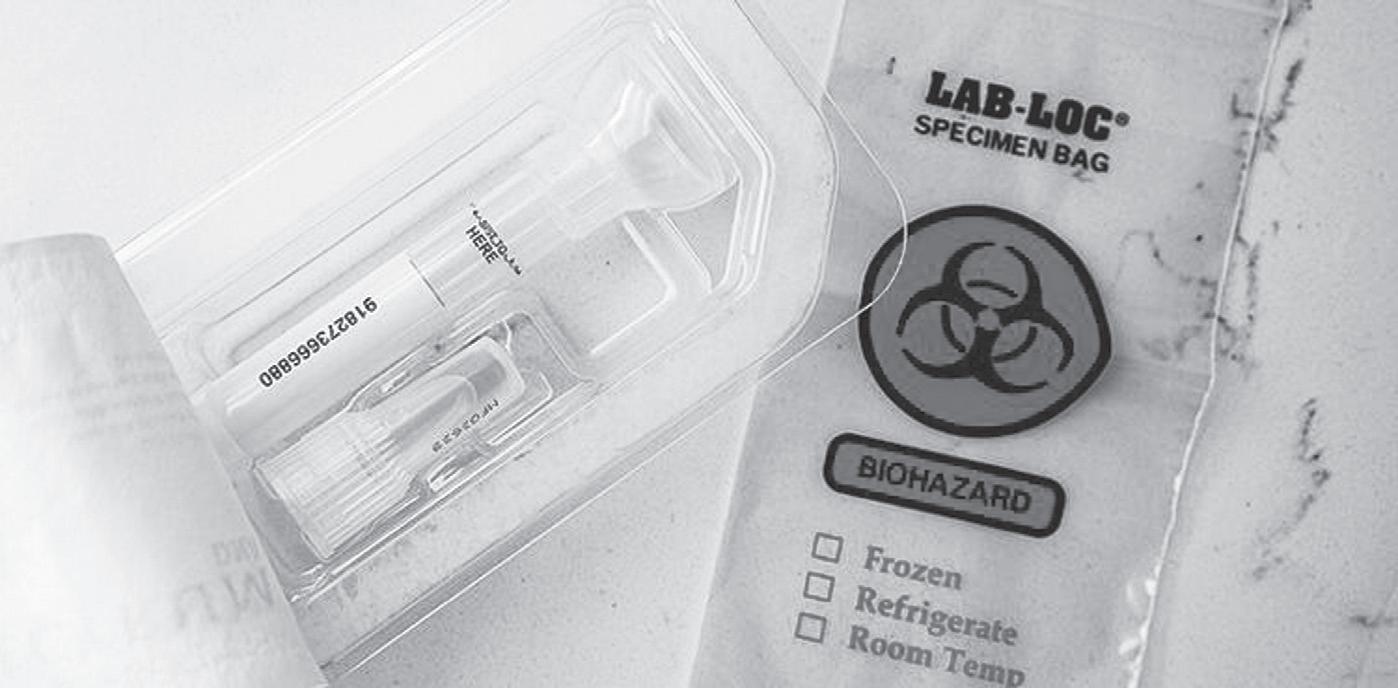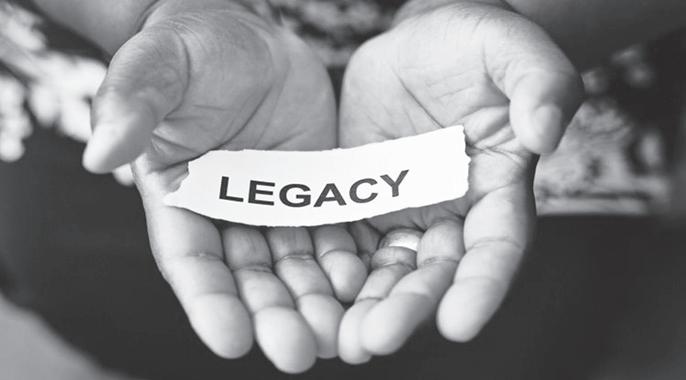
8 minute read
ne increases to up to $250fi
WI N N ER: 2 0 2 0 T YPO G RAPH Y & D ESI G N , 1 S T PLACE, PH O TO G RAPH Y ( PO R TRAI T & PERSO N ALI T Y) , 1 S T PLACE, WEB SI TE, 3 RD PLACEINNER: 2020 TYPOGRAPHY & DESIGN, 1ST PLACE, PHOTOGRAPHY (PORTRAIT & PERSONALITY), 1ST PLACE, WEBSITE, 3RD PLACE Insight Newsnsight News
September 14, 2020 - September 20, 2020eptember 14, 2020 - September 20, 2020 Vol. 47 No. 37• The Journal For Community News, Business & The Arts • insightnews.com
photo/Vault Health School and child care staff are currently limited to one test per person under this program. They will use the same process for anyone taking a Vault Health COVID-19 saliva test, which includes spitting into a funnel while connected with a Vault test supervisor over a Zoom video call.
As school resumes across state, more than 250,000 saliva tests provided to school and child care employees in effort to limit exposures and disease spread Governor Walz Announces Free COVID-19 saliva tests for teachers, school staff
Governor Tim Walz announced that teachers, school staff , and childcare providers across the state have received access to their free COVID-19 saliva test, totaling more than 250,000 tests. The saliva tests are part of the Safe Learning Plan for the 2020-21 School Year and consistent with the Walz administration’s commitment to providing access to COVID-19 testing for Minnesotans working in child care and prekindergarten to grade 12 schools. “As a classroom teacher for more than 20 years and a parent of a child in public schools, I know that a safe classroom is the foundation for learning,” said Walz. “Those educating and caring for By Ali Mostafavi, Associate Professor of Civil Engineering, Texas A&M University With Hurricane Laura hitting Louisiana and Texas as an “extremely dangerous” Category 4 storm and wildfi res menacing the western U.S., millions of Americans are facing the complex risks of a natural disaster striking in the middle of a pandemic. The steps people normally take to prepare for a severe storm or to evacuate can contradict the public health recommendations for protecting themselves and others from COVID-19. That’s what millions of people were facing as Hurricane Laura intensifi ed in the Gulf of Mexico. More than half a million people were under evacuation orders, including the cities Galveston, Beaumont and Port Arthur, Texas. My urban resilience lab at Texas A&M University has been examining interactions between urban infrastructure, systems and people in disasters. At the onset of the COVID-19 pandemic, we launched a study into the eff ect of the pandemic on urban systems during a natural disaster, applying similar methods we used during extensive research on Hurricane Harvey, which fl ooded Houston Minnesota’s next generation deserve the peace of mind that these COVID-19 tests will provide.” The Minnesota Department of Education (MDE) has emailed thousands of unique codes that can be used to request a saliva test, which schools will distribute to all staff currently employed by Minnesota’s school districts, charter schools, tribal schools, and nonpublic schools. Additionally, the Department of Human Services (DHS) has provided codes to all staff currently working in licensed child care settings and certifi ed centers. “All families in our state, including our littlest in August 2017. Our research shows that compound disasters have complex ramifi cations. At the intersection of a natural hazard and a pandemic is a decision process fraught with contradictions.
Storm prep and evacuations raise the risks
During the three days before Hurricane Harvey hit, the number of grocery store and gas station visits in the Houston area increased by 50% to 100%. People didn’t think twice about running to the store. As Hurricane Laura headed for the Louisiana and Minnesotans, want to know their teachers, school nutrition workers, and child care staff are supported. This means if they are exposed to COVID-19 as a frontline worker, we work to make sure they have access to testing,” said Flanagan. “Our goal is to create safe in-person learning for as many children as possible, and saliva tests are one piece of the puzzle to support that plan.” The tests are provided through a partnership with Vault Health and Infi nity Biologix (formerly RUCDR Infi nite Biologics, a unit of Rutgers University Human Genetics Institute of New Jersey), the nation’s leading providers of saliva testing. Walz recently Texas coasts, residents were in very a diff erent situation. The rise of COVID-19 illnesses and deaths across the South during the summer meant people were encouraged to self-quarantine and limit their social contact to prevent transmitting the coronavirus. They could still wear masks in stores, but keeping the recommended six feet apart gets harder when stores get crowded. It means spending more time waiting with others in lines and jostling in the aisles. Research shows that both the amount of virus and the amount of time a person is exposed to it have an impact on whether they get infected and announced that the state would be partnering further with the company, to make saliva testing available to all Minnesotans. Teachers and staff are not required to take the tests before coming back to the classroom or to continue working in a child care setting. State offi cials urge them to get tested when they need it, such as when they’re feeling symptomatic or when they believe they may have been exposed to someone who is COVID positive. The tests must be used by the end of 2020, though the state is exploring options to extend access for the
COVID-19 TEST
4
Hurricanes and wildfi res are colliding with the COVID-19 pandemic – and compounding the risks
photo/AP Photo/Gerald Herbert

Evacuations during Hurricane Laura could increase the risk of exposure to COVID-19.
remainder of the 2020-21 school how severely. An even more onerous complication – for both authorities and residents – is evacuation. The decision to evacuate in the face of even a single hazard, whether a wildfi re or a hurricane, is diffi cult. Sheltering in place can mean life-threatening conditions, prolonged power outages and disrupted access to critical facilities. Evacuating means leaving behind one’s house and possibly animals to an uncertain fate. That’s complicated
HURRICANES
4
Michelle Obama: We must vote like our life depends on it!
Compiled from AARP sources By Brenda Lyle-Gray Columnist

Minnesota state, county, and city offi cials are encouraging registered voters to vote from home casting absentee ballots. The coronavirus has not gone away, and a safe vaccine might not be available until this time next year. The pandemic still looms, and an uncertain winter with seasonal fl u and COVID19 in the atmosphere simultaneously will test the constitution of citizens and frontline medical personnel and scientists. That event could take place three months from now and we must be prepared. No one is required to off er an explanation as to why they choose not to walk through the voting polls’ front doors. The ‘witness’ signature requirement for registered voters casting mail-in or absentee ballots has been waved. Early in-person absentee voting will be available starting September 18 th at your local election polling locations. 46 days before the election, ballots will be distributed to voters who have already registered. For those voters who registered late, ballots will be sent out on a rolling basis. Ballots must be postmarked by Election Day, November 3 rd . However, they can be received within seven days of the election. Ballots must be mailed or delivered to your county elections offi ce by 3 p.m. on Election Day, November 3 rd .
Registering to Vote
Registered voters in Minnesota have the choice to: Register to vote online – Offi ce of Secretary of State voter registration portal. Genealogy is history and history involves the exploration of family trees and, of course, people. The COVID-19 crisis has inspired an increase in African American genealogical research activity. During the pandemic, people are spending time tracking ancestors, building family trees online, and taking DNA tests to make sense out of family histories. The reasons vary from the luxury of lockdown time to pursue and peruse documents online to the recent surge in social unrest. Whatever the reason or reasons, Black family genealogical research is often complicated by the history Michelle Obama
Voters must register online or by mail by October 13 th . Voters can apply for an absentee ballot any time except on Election Day. Download and print a voter registration form – in person delivery to county election’s offi ce or mail-in. The form can also be mailed or delivered to the St. Paul Secretary of State’s offi ce. Leave time for election offi cials to mail your ballot. Registered voters with a valid form of identifi cation confi rming name and address can vote at their local polling place(s) on Election Day. A listing of acceptable forms of identifi cation can be found on the Secretary of State’s website. Voters who have health complications, live in a nursing home, or are hospitalized can designate an agent, e.g. family member, attorney - to pick up and return the absentee ballot in place of them. A separate form must be completed and returned to their local election offi ce with their absentee ballot application.
Safeguards Against Voter Fraud
There have been no cases to-date reported of anyone trying to vote illegally with a stolen ballot. Any person who steals a ballot from a mailbox, and then tries to cast it at a

COVID-19 inspires an uptick in Black family history research and genealogy
local election’s offi ce, would of slavery in this country. The 1870 Census is the fi rst census that lists African Americans by name and location and within the larger census, whereas it was rare to fi nd a black person included in earlier census records as anything less than an unnamed human property like cattle. There are slave records and other deeds that include names but it is still a challenge to locate ancestors. African Americans in Minnesota have a few resources available to assist in family research. Family Search has a list of African American resources and records. The GENEALOGY 5




